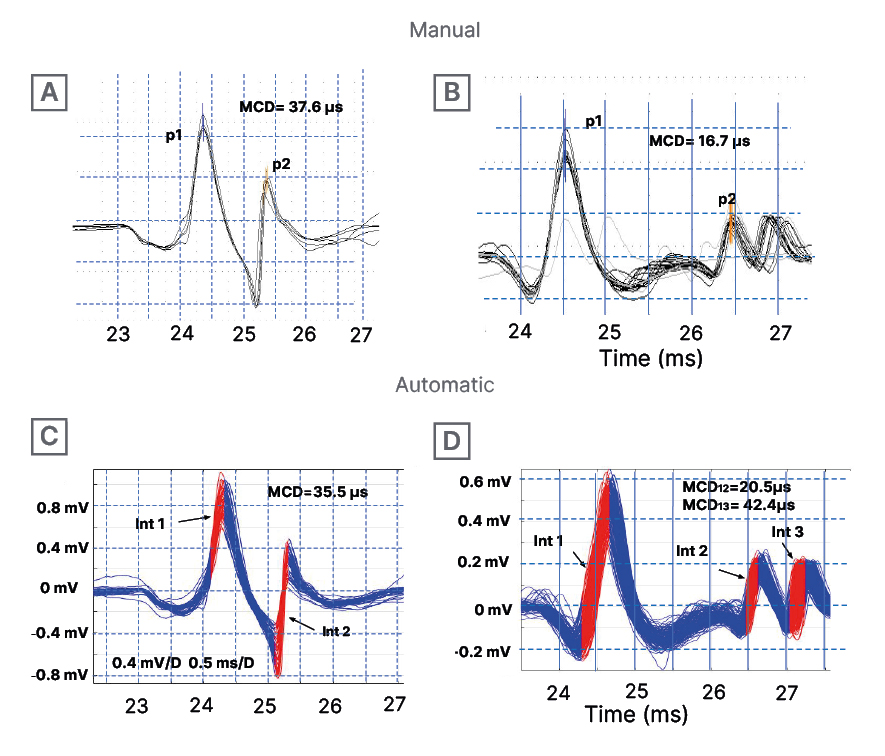INTRODUCTION
Neurophysiological jitter measurement using concentric needle electrodes is a laborious and difficult task because potentials from several fibres may appear in the recordings due to the large recording areas of these electrodes.1 This work presents the use of an automatic method that estimates jitter from motor unit potential (MUP) trains recorded using concentric needle electrodes.2
METHODS
MUP intervals likely being formed by only one muscle fibre potential were detected from MUP trains. Then jitter measurements were performed between pairs of these intervals. One hundred and thirty-two electromyographic signals were recorded from eight patients with disorders of the neuromuscular junction or different neuropathies, using a Keypoint system and facial-concentric electrodes. These signals were decomposed into several MUP trains using decomposition-based quantitative electromyography software. Jitter measurements of mean absolute consecutive differences (MCD) were then estimated manually, using a home-made graphical interface (Figure 1A and B) and using the automatic method (Figure 1C and D).

Figure 1: Examples of motor unit potential trains analysed by the manual method, with marked negative peaks (A and B); and by the automatic method, with highlighted valid intervals (C and D).
Obtained MCD values are shown.
MCD: mean absolute consecutive differences; ms: milliseconds.
CONCLUSIONS
The proposed method can be a valuable tool in clinical practice for obtaining reliable automatic jitter measurements and also as a real-time guide for manual jitter measurements. Still, new tests should be carried out to broaden the scope of this study.







